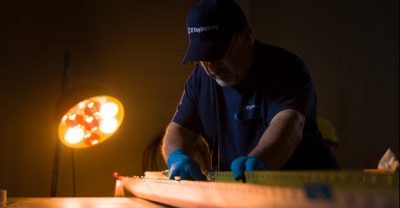Engineering Design and Manufacturing is the process of designing, creating, testing, and refining a product in order to make it meet certain standards. This includes everything from the conceptualization stage to the final stages before release. In this post, we will be covering each of these steps in detail so that you can create your own products for sale or personal use!

What is engineering design and manufacturing?
Engineering design and manufacturing is an integrated endeavor of mechanical engineering, industrial engineering, production relation (supply chain management), human factors, and ergonomics.
What does it take to be a successful engineer?
Everyday life requires engineers with skills in both the technical aspects of designing things?such as making tools for other designers?and understanding how people interact with those designs.
Designing: Designers are responsible for sketching out steps on paper that illustrate how they envision their product when built. Then come draftsmen who create detailed drawings based on what the designer has drawn. Finally comes the blueprint stage, where blueprints are created from these drawings that show every detail of what will go into building the product.
Manufacturing: The process of manufacturing a good begins with the design. The designer creates a prototype, which is an initial attempt to produce the model or style they have designed to verify their workability and functionality. When it has been verified as functional, prototyping comes where you create a simple model from various materials such as wood or metal for testing purposes.
The process of engineering design and manufacturing
The engineering design and manufacturing process begins with an idea or prototype. The prototyping phase of the process can be quite expensive, so it is important to start at this stage rather than making changes later in the production cycle. Prototyping should not be undertaken without a clear need for one, as creating prototypes unnecessarily will add a high cost to your product’s final price tag.
A common method employed by engineers during the prototyping phase is called rapid-prototyping. This technique allows them to create various models quickly and inexpensively using computer-aided drafting software on a personal Computer-Aided Design (CAD) system, which generates designs that can then be outputted onto circuit boards through manufacture from materials such as plastic brass castings and sheet metal.
The Engineering Design Process can be broken down into five general steps:
Research – Getting data on what needs to be done by looking at specific industries in order to find out their best practices; Concept Development – Forming ideas for how a concept could be implemented, including identifying any potential challenges beforehand; Detailed Planning – Coming up with an implementation plan based off of previous research; Construction/Prototyping – Making sure all details within the product are accounted for before producing it or prototyping it where needed ( using tools like AutoCAD), and Testing – Making sure the product is working as expected before it goes into full production.
The Manufacturing Process can be broken down into six general steps:
Design for Manufacturability – Designing products to ensure they are easily manufactured using processes in a factory; Producing Tooling/Molds – Creating the tooling used to produce a part or mold out of metal, plastic, carbon fiber, etc.; Design For Assembly (DFA) – Adding parts together so that there are no assembly errors later on when assembling the whole product; Machining Parts/Assembling Product – Cutting materials such as metals with machines or putting all components together by hand which will then make up an entire unit; Quality Control – Checking products for defects or errors before they are shipped; and Distribution – Shipping a finished product to the customer.

As the editor of the blog, She curate insightful content that sparks curiosity and fosters learning. With a passion for storytelling and a keen eye for detail, she strive to bring diverse perspectives and engaging narratives to readers, ensuring every piece informs, inspires, and enriches.









